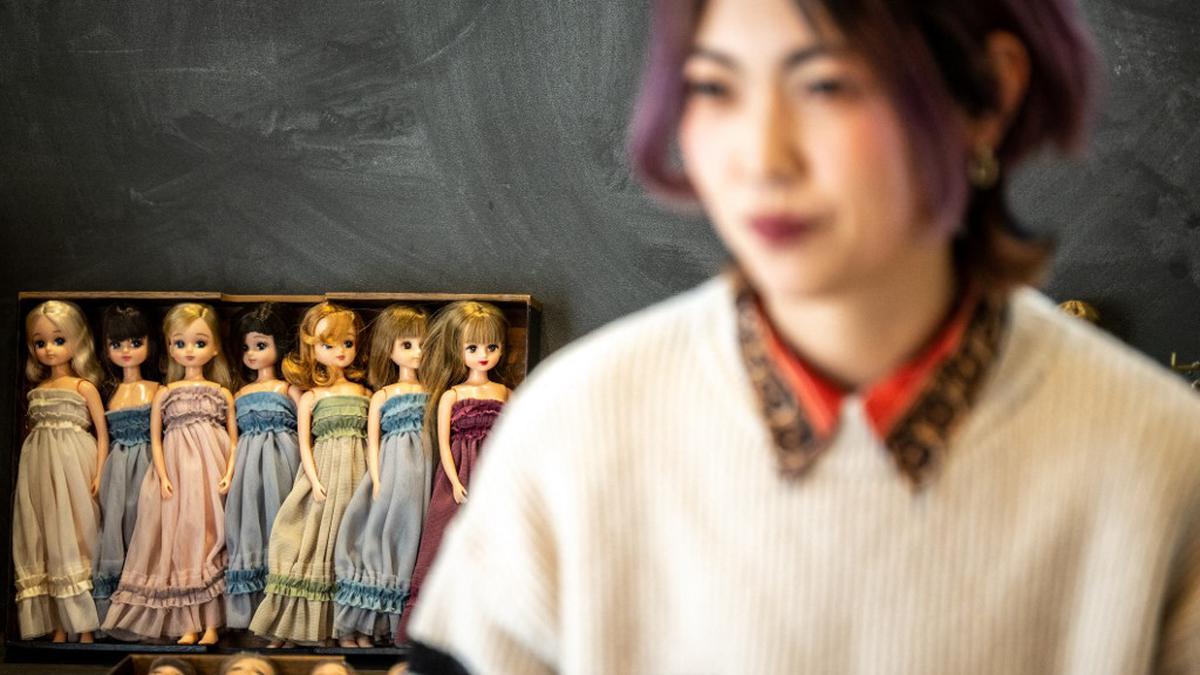Ryoko Baba, a 33-year-old graphic designer, speaking in front of her Licca-chan collection. The doll’s appeal is spreading to all ages
| Photo Credit: AFP
With her wide eyes and demure smile, Licca-chan is known as “Japan’s Barbie”. And her appeal is spreading to all ages, with adults turning the doll into a social media superstar.
One fan posts wry videos of the plastic poppet to over a million Instagram followers, while others painstakingly craft miniature clothes and share photos of their fashion shoots.
Minami Murayama, a 34-year-old homemaker who once had ambitions of becoming a fashion designer, told AFP that her “dream has come true at one-sixth of the size” thanks to Licca-chan.
“If I see a stylish woman wearing something that I couldn’t wear because of my age or body size, Licca-chan can still wear it and look good,” said Murayama, who owns around 40 dolls and has hand-made over 1,000 outfits for them.
Licca-chan has been a favourite of Japanese children since she appeared in toy shops in 1967, and manufacturer Takara Tomy has sold over 60 million of them. The company’s official biography casts her as an 11-year-old girl with a Japanese designer mother and a French musician father.
At 22 centimetres (8.5 inches) tall, she is smaller and less glamorous than Barbie, who Murayama describes as “a supermodel” compared with Licca-chan’s more “familiar” look.
Murayama spends hours making clothes for her dolls and favours denim, which her husband helps her bleach and tear to achieve the “distressed” look. She has built a series of intricate sets, using tiny props to decorate mini cafes and fashion studios.
“There are lots of different jobs I would like to do, such as running a cafe or a bakery or being a fashion designer,” she said. “Of course, there’s no way I could do them all in real life, but I can do them all in a doll’s world.”
‘She makes mistakes’
Murayama is a fan of a popular social media channel whose name translates as “Licca-chan’s Real Life”.
It features tongue-in-cheek videos and photos of the doll in mundane situations such as struggling with an overstuffed rubbish bag or relaxing at home in pyjamas.
The channel offers an antidote to the idealised lives that people project online, said its creator, who has over a million Instagram followers but prefers to remain anonymous so her videos don’t get her into trouble at work.
“The Licca-chan in Licca-chan’s Real Life doesn’t live a glamorous life — she lives a real life in a messy room and she makes mistakes,” she told AFP.
“If you show people that even someone like Licca-chan lives like that, it gives them the courage to be comfortable with themselves.”
Takara Tomy is not keen on “Licca-chan’s Real Life”, saying the videos have “a different worldview” from their fiercely protected official image of the doll.
But the channel has struck a chord with Licca-chan’s adult fans, who form an online community and swap homemade garments and accessories.
Ryoko Baba, a 33-year-old graphic designer, played with Licca-chan as a child and revived her interest around two years ago as a way to relieve stress. She thinks the lingering effects of the COVID-19 pandemic have given people more time to spend at home with their hobbies and less chance to leave the house.
“When you want to go out but you can’t, you have far fewer opportunities to buy new clothes,” she said. Many people have “satisfied that desire by dressing up dolls instead”, said Baba, who often recreates outfits from her own wardrobe for her dozens of dolls to wear.
Takara Tomy is aware of its growing adult fan base and has launched a “stylish doll collection” aimed at older customers.
Maruyama said “there are lots of adults who play with kids’ toys” in Japan where “there’s not really a separation” between the two, with train set collectors being one example.
Baba, who describes Licca-chan as a “national icon”, believes the doll’s appeal will only grow.
“Recently I’ve seen a lot of comments from people saying they didn’t know that this world existed,” she said. “I hope I can help spread the word.”





%2004.jpg)

